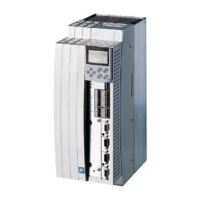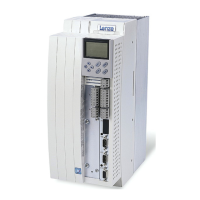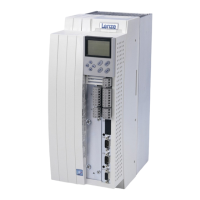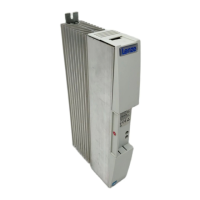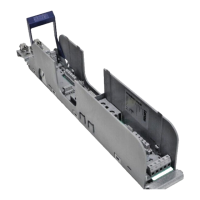9300 Servo PLC
System blocks
2.13 Internal motor control (MCTRL_MotorControl)
2-56
9300ServoPLC EN 1.4
2.13.11 Touch-Probe (TP)
TP
ϕ
M C TR L_dnActIncLastS can_p
Abb. 2-30 Function diagram of a TP
Time-equidistant start of an interval-task
ϕ Phase-angle signal
Functional sequence
1. The TP is triggered by a FALSE-TRUE edge at the digital input X5/E4 or by a zero pulse from
X8 or X7.
– Use C0911 to select whether the TP should be carried out by the MP (marker pulse input X8
or zero pulse from resolver)or from the X5/E4 input.
– Use C0910 to set a delay (unit: increments) for a TP. This means that the TP/MP-Ctrl has a
delayed response to a TP.
– Through C0912 you can set up whether the TP from E4 should be triggered by a rising or
falling edge (0 = rising edge, 1 = falling edge).
– Use C0490 to select the feedback system that generates the zero pulse.
2. If a TP has occurred, then
MCTRL_bActTPReceived_b
=TRUE.
3. After the start of the task,
MCTRL_dnActIncLastScan_p
gives the number of increments
[inc/msec] that have been counted since the TP.
4. Following,
MCTRL_bActTPReceived_b
= FALSE is set.
Tip!
It is also necessary that
MCTRL_nNAct_v
is processed in the task, so that the SB MCTRL is read in.
MCTRL_nNAct_v
• The value
MCTRL_nNAct_v
is scaled in increments per millisecond.
(INT 16384 ≡ 15000 rpm)
• For every task in which
MCTRL_nNAct_v
is used, the operating system creates an individual
counter that is reset after every start of the task.

